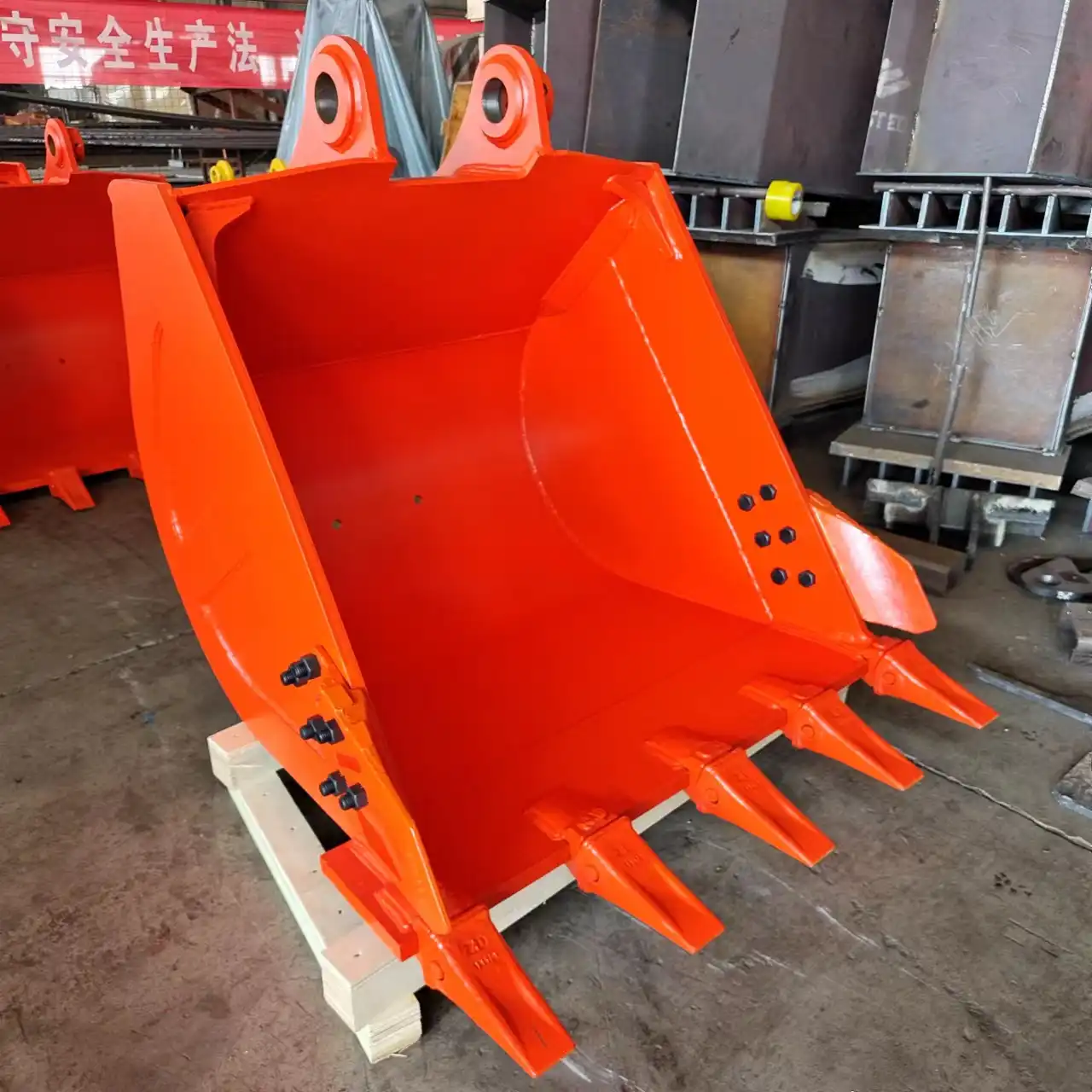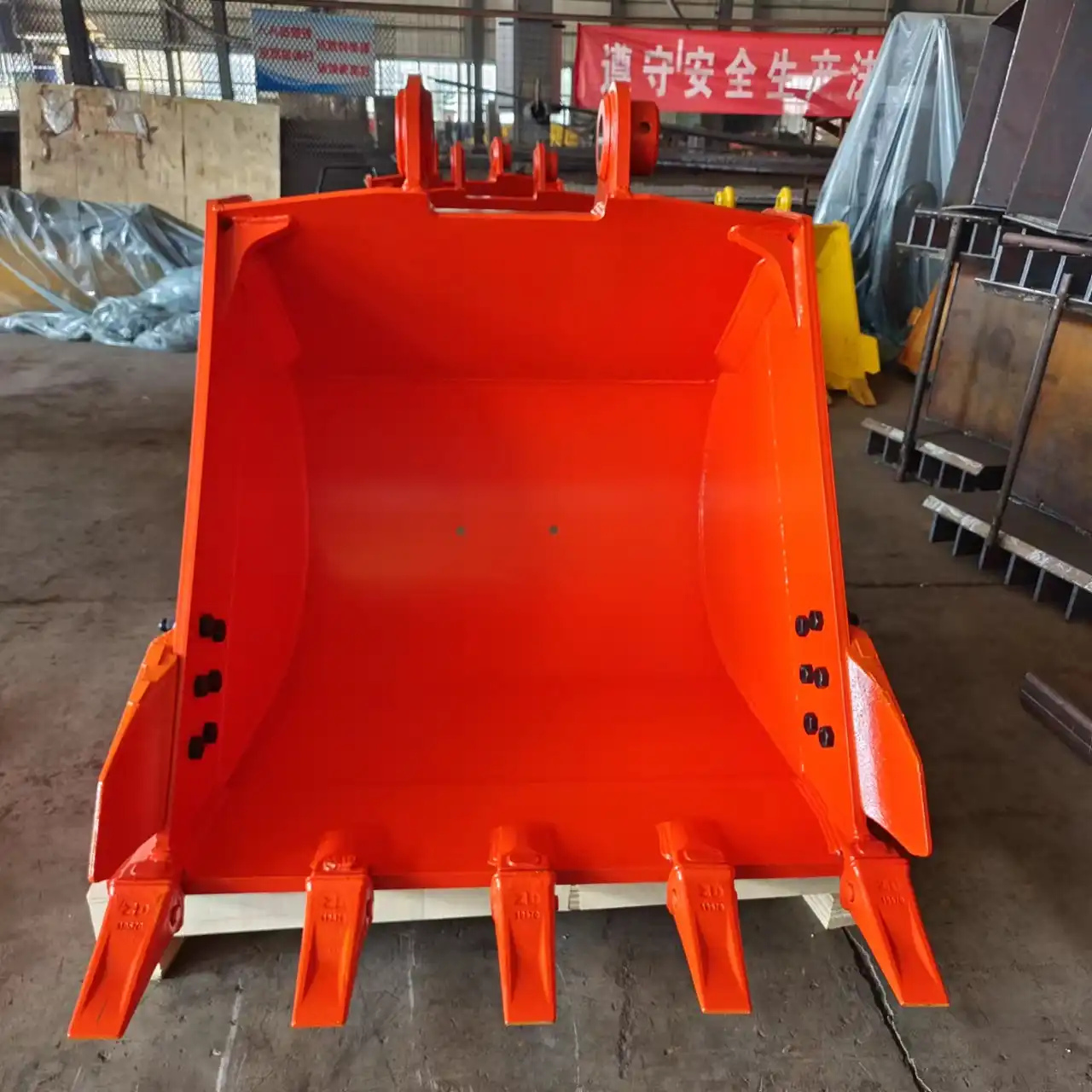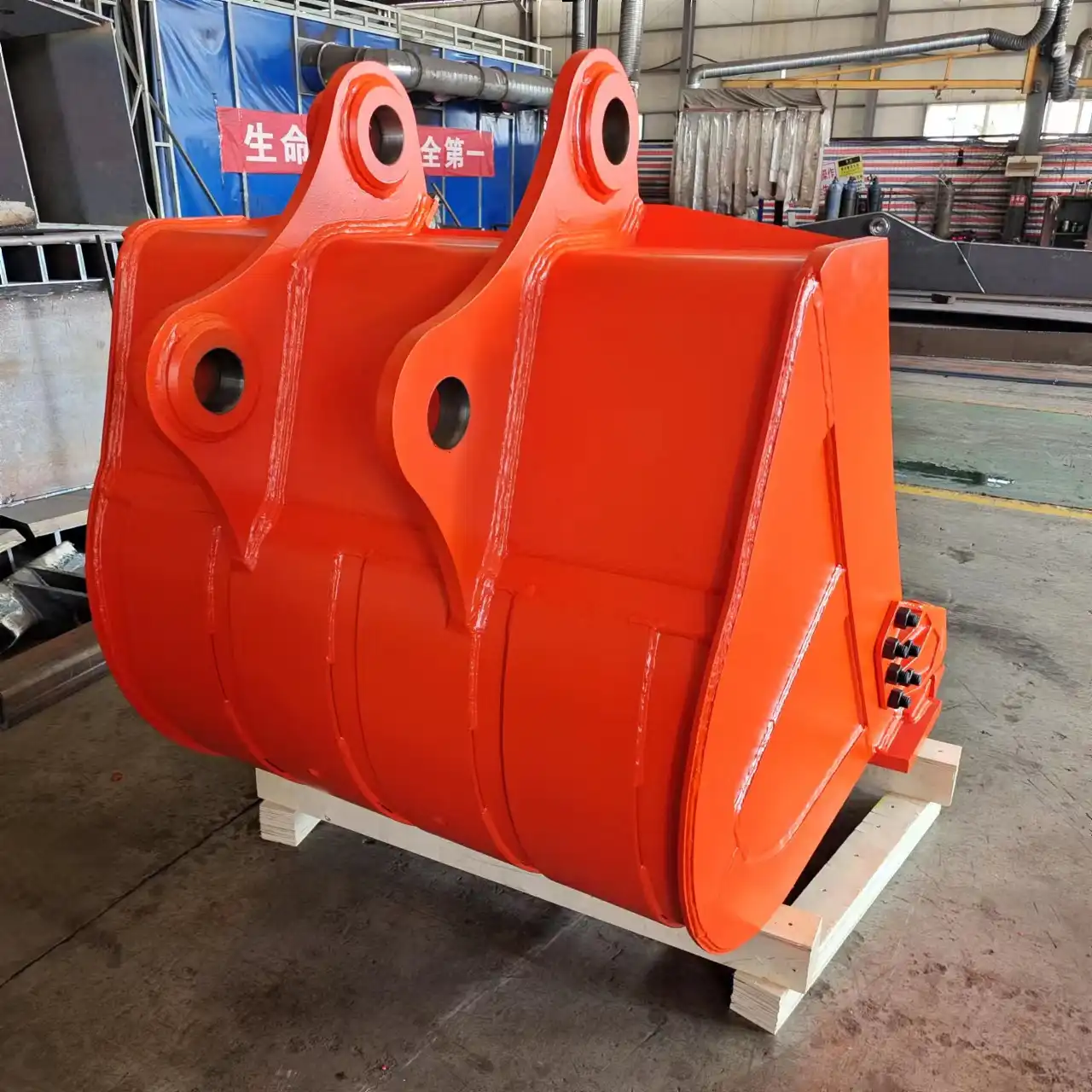How to measure excavator bucket capacity?
Measuring excavator bucket capacity accurately is crucial for construction professionals, mining operators, and equipment managers who need precise calculations for project planning and cost estimation. Understanding bucket capacity helps determine material handling efficiency, job completion timelines, and equipment selection for specific tasks. The measurement process involves calculating the volume of material a bucket can hold, which directly impacts productivity and operational costs across railway construction, demolition, landscaping, and waste management projects.
When selecting appropriate bucket attachments for an excavator, professionals must consider both struck capacity and heaped capacity measurements. These calculations ensure optimal equipment performance while maintaining reasonable cost control and meeting project specifications. Modern excavation operations require precise capacity measurements to guarantee stable delivery schedules and maintain controllable product quality standards that purchasing managers and engineers demand.

Struck Capacity
Struck capacity represents the precise volume measurement of material that fills an excavator bucket when leveled flush with the cutting edge and side plates. This fundamental measurement provides the baseline calculation for determining actual bucket performance in real-world applications. Construction professionals rely on struck capacity calculations to establish accurate material handling estimates and project timelines.
Mathematical Formula and Calculation Methods
The struck capacity calculation follows a systematic approach using geometric principles to determine exact volume measurements. Engineers measure the internal bucket dimensions including width, depth, and height to establish the working volume. The formula accounts for the bucket's curved bottom section and tapered sidewalls, which affect the total capacity calculation.
Professional measurement requires precise tools including steel measuring tapes, digital calipers, and angle measuring devices. The calculation process involves measuring the bucket opening width, internal depth from cutting edge to back wall, and the effective height from bottom to the level fill line. These measurements must account for any internal reinforcement structures or wear plates that reduce available volume.
Industry Standards and Specifications
International standards govern struck capacity measurements to ensure consistency across different manufacturers and regions. The Society of Automotive Engineers (SAE) and International Organization for Standardization (ISO) have established specific protocols for capacity measurement and reporting. These standards help purchasing supervisors and engineers make informed decisions when comparing different bucket options.
Measurement protocols require specific environmental conditions and standardized procedures to ensure accurate results. The bucket must be positioned on level ground with proper support to prevent deflection during measurement. Temperature considerations affect metal expansion, which can impact precision measurements for quality control purposes.
Practical Applications in Field Operations
Struck capacity measurements directly influence job site productivity calculations and material handling estimates. Construction managers use these figures to determine cycle times, fuel consumption rates, and equipment selection for specific project requirements. Accurate struck capacity data helps optimize workflow planning and resource allocation across railway maintenance, mining, and demolition operations.
Field conditions often require adjustments to theoretical struck capacity measurements due to material characteristics and operational factors. Dense materials like rock or concrete require different handling approaches compared to loose soil or debris. Understanding these variations helps operators maximize equipment efficiency while maintaining safety standards.

Heaped Capacity
Heaped capacity measurements account for the additional material volume that can be carried above the bucket's struck level, creating a natural angle of repose. This measurement provides more realistic capacity figures for actual working conditions where materials naturally pile above the bucket edges. Understanding heaped capacity helps operators maximize payload while maintaining equipment stability and safety margins.
Angle of Repose Calculations
The angle of repose varies significantly depending on material characteristics, moisture content, and particle size distribution. Dry sand typically maintains a 30-35 degree angle, while clay materials can sustain steeper angles approaching 45 degrees. Engineers must consider these material properties when calculating realistic heaped capacity for specific applications.
Professional capacity calculations incorporate standardized angles based on material classifications and industry experience. The most commonly used angle for general excavation work is 1:1 (45 degrees), which provides conservative estimates suitable for mixed material conditions. This approach ensures reliable capacity estimates while maintaining safety margins for equipment operation.
Material Properties and Capacity Impact
Different materials exhibit varying behaviors when loaded above struck capacity levels, affecting the practical working capacity of excavator bucket attachments. Cohesive materials like wet clay or compacted soil can maintain steeper pile angles, while granular materials like sand or gravel flow more readily and require flatter angle calculations.
Moisture content significantly influences material behavior and heaped capacity calculations. Wet materials often exhibit higher cohesion, allowing for increased heaped capacity, but also increase overall weight and may exceed equipment lifting capabilities. Operators must balance capacity optimization with equipment limitations and safety requirements.
Operational Efficiency Considerations
Heaped capacity measurements help operators understand maximum theoretical payload while considering practical limitations such as bucket spillage, material segregation, and transport stability. Experienced operators learn to optimize bucket loading techniques to approach heaped capacity without compromising cycle times or equipment performance.
Working conditions including travel distance, terrain roughness, and material characteristics influence practical heaped capacity utilization. Short haul distances allow for higher capacity loading, while longer transport distances or rough terrain may require reduced loading to prevent material loss and maintain equipment stability.

Customized Buckets
Customized bucket solutions address specific operational requirements that standard capacity measurements cannot accommodate. Specialized applications in railway construction, waste management, and forestry operations often require unique bucket designs with modified capacity characteristics. Understanding customization options helps purchasing managers select optimal equipment for specialized applications.
Design Modifications and Capacity Adjustments
Custom bucket designs can significantly alter both struck and heaped capacity measurements through geometric modifications, reinforcement additions, and specialized features. Extended cutting edges, reinforced sidewalls, and modified back sections can increase or decrease effective capacity depending on application requirements. These modifications require recalculation of capacity measurements using updated dimensional data.
Specialized bucket features such as drainage holes, screening sections, or material retention systems affect capacity calculations and operational performance. Engineers must account for these modifications when determining effective working capacity and comparing customized solutions against standard bucket options.
Application-Specific Requirements
Railway maintenance operations require specialized bucket designs with specific capacity characteristics to handle ballast, debris, and track materials effectively. These applications often prioritize precise material placement over maximum capacity, requiring careful balance between bucket size and operational accuracy. Custom solutions address these unique requirements while maintaining compatibility with existing equipment.
Mining and demolition applications may require reinforced bucket designs with modified capacity characteristics to handle abrasive or heavy materials. These customizations often reduce struck capacity due to additional reinforcement but improve durability and operational lifespan. Understanding these trade-offs helps decision makers select appropriate solutions for demanding applications.
Cost-Benefit Analysis for Custom Solutions
Customized excavator bucket attachments require careful cost-benefit analysis considering initial investment, operational efficiency gains, and long-term durability improvements. Custom solutions often command premium pricing but can provide significant operational advantages for specialized applications. Purchasing supervisors must evaluate total cost of ownership including maintenance, replacement frequency, and productivity improvements.
ROI calculations for custom bucket solutions should include productivity gains, reduced maintenance costs, and improved material handling efficiency. Specialized designs may reduce cycle times, improve material retention, or extend equipment lifespan, providing substantial value despite higher initial costs. Comprehensive evaluation helps justify investment in customized solutions for specific operational requirements.
FAQ
①What tools are needed to measure bucket capacity accurately?
Professional capacity measurement requires steel measuring tapes, digital calipers, angle measuring devices, and level surfaces. Precision instruments ensure accurate dimensional data for reliable capacity calculations.
②How does material type affect capacity measurements?
Material density, cohesion, and angle of repose significantly impact practical capacity. Heavy materials may not achieve full heaped capacity due to weight limitations, while cohesive materials can maintain steeper pile angles.
③What's the difference between SAE and ISO capacity standards?
Both standards provide similar measurement protocols but may differ in specific procedural details and reporting requirements. Most manufacturers comply with both standards to ensure global compatibility.
④Can bucket modifications affect warranty coverage?
Modifications may impact warranty terms depending on manufacturer policies and modification extent. Always consult with suppliers before making changes to ensure continued coverage and support.
⑤How often should capacity measurements be verified?
Regular verification depends on usage intensity and wear patterns. Heavy-duty applications may require quarterly checks, while standard operations can utilize annual verification schedules.
Choose TianNuo for Superior Excavator Bucket Solutions
TianNuo Machinery offers comprehensive excavator bucket attachments designed for optimal capacity and performance across diverse applications. Our extensive product range includes Degree Rotating Hydraulic Tilt Ditching Buckets, Excavator Grid Bucket Screening Buckets, Railway dustpan excavator buckets, Front Loader Buckets, and Excavator Special-Shaped Buckets. Each solution features high-strength wear-resistant steel construction with capacities ranging from 0.1 to 5.0 cubic meters, weights from 100 to 2000 kg, and widths spanning 500 to 2000 mm.
Our customization capabilities ensure perfect compatibility with various excavator models through pin-on or quick coupler attachment systems. Safety features including reinforced edges and wear plates provide reliable performance for railway construction, mining, demolition, landscaping, waste management, and forestry applications. Whether you need Excavator Rotary Screening Buckets, High Frequency Screening Buckets, Clamshell Buckets, or specialized Rock Buckets, TianNuo delivers engineered solutions that optimize capacity utilization while maintaining controllable quality and competitive pricing.
For detailed product specifications, capacity calculations, and customized solutions tailored to your operational requirements, contact our engineering team at arm@stnd-machinery.com. Experience the TianNuo advantage with superior bucket attachments for excavators that deliver measurable productivity improvements and reliable performance across demanding applications.
References
- International Organization for Standardization. "Earth-moving machinery — Volumetric capacity rating for buckets of hydraulic excavators and backhoe loaders." ISO 7546:2017 Standard.
- Society of Automotive Engineers. "Excavator Bucket Volumetric Capacity Measurement Procedures." SAE J296 Standard for Construction Equipment, Revised Edition 2020.
- American National Standards Institute. "Construction Equipment Bucket Capacity Rating Methods and Guidelines." ANSI/ASAE EP496.3 Agricultural and Construction Equipment Standard, 2019.
- European Committee for Standardization. "Earth-moving machinery — Bucket capacity measurement for hydraulic excavators." EN ISO 7546 European Standard, 2018.
- Construction Industry Institute. "Excavator Bucket Selection and Capacity Optimization for Heavy Construction Projects." CII Research Report 385-1, University of Texas Construction Engineering, 2021.
About Author: Arm
Arm is a leading expert in the field of specialized construction and railway maintenance equipment, working at Tiannuo Company. Tiannuo specializes in manufacturing a wide range of products, including railway maintenance equipment like railway sleeper changing machines and screening machines, excavator modification equipment such as excavator lifting cabs, various engineering arms for excavators, excavator accessories like digging buckets, and engineering vehicle auxiliary equipment like loader buckets.

